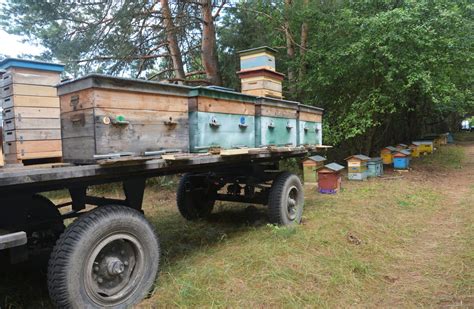How To Transport Beehives
Ronan Farrow
Apr 02, 2025 · 3 min read

Table of Contents
How to Transport Beehives Safely and Effectively
Moving beehives requires careful planning and execution to ensure the safety of your bees and yourself. Improper transportation can lead to stressed bees, damaged hives, and even injury. This comprehensive guide will walk you through the process, step-by-step.
Preparing Your Beehives for Transport
Before you even think about loading your hives, thorough preparation is key. This phase minimizes stress on the bees and prevents accidents.
1. Timing is Everything:
- The Best Time to Move: Transporting beehives is best done in cooler weather, ideally early morning or late evening when bees are less active. Avoid midday heat, as this will stress the bees significantly.
- Consider the Season: Spring and fall are generally less ideal times due to brood production and foraging activity. However, if a move is absolutely necessary during these seasons, take extra precautions.
2. Secure the Hives:
- Securing Frames: Ensure all frames are securely wired and won't shift during transit. Any loose frames can damage the comb and injure bees.
- Reduce Entrance Size: Narrow the hive entrance to a small opening using a reducer. This keeps the bees contained and prevents them from escaping during the move.
- Secure the Hive Body: Use strong straps or bungee cords to secure the hive bodies to the transport vehicle. This prevents shifting and potential damage. Consider using additional bracing inside the vehicle as well.
- Ventilation is Vital: Adequate ventilation is critical to prevent overheating. Make sure there's enough airflow within the hives. You might need to add additional ventilation holes (carefully) or use screened inserts.
3. Preparing Your Vehicle:
- Choose the Right Vehicle: A truck or van with a secure, level loading area is ideal. Avoid bumpy rides whenever possible.
- Secure the Load: Tie down the hives to prevent movement during transport. Remember, the weight of a full beehive is substantial!
Transporting Your Beehives: The Moving Day
With your hives prepared, you can now begin the move.
1. Gentle Loading and Unloading:
- Avoid Jerky Movements: Load and unload the hives slowly and gently to minimize stress on the bees.
- Proper Placement: Arrange the hives to maintain stability and prevent shifting during transit.
2. During Transportation:
- Drive Carefully: Maintain a steady speed and avoid sudden braking or sharp turns. A smooth ride is crucial for bee safety.
- Monitor Temperature: Check the temperature inside the hives periodically, especially during warmer weather. Consider using a thermometer inside the vehicle.
Post-Transport Care
After the journey, your bees will need time to adjust to their new location.
1. Re-orientation and Monitoring:
- Release Bees Gradually: After unloading, remove any straps and gradually open the hive entrance to allow bees to re-orient themselves.
- Observe for Signs of Stress: Check for any signs of stress such as excessive buzzing or dead bees.
2. Providing Resources:
- Ensure Food and Water: Make sure the bees have plenty of food and water sources available.
By following these steps, you can safely and successfully transport your beehives, minimizing stress on your bees and ensuring a smoother transition to their new home. Remember, safety and preparation are paramount.
Featured Posts
Also read the following articles
| Article Title | Date |
|---|---|
| How To Start Lending Business In Philippines | Apr 02, 2025 |
| How To Straighten Outboard Skeg | Apr 02, 2025 |
| How To Register A Vehicle In South Dakota | Apr 02, 2025 |
| How To Take Rad 140 Liquid | Apr 02, 2025 |
| How To Smoke Without Wraps | Apr 02, 2025 |
Latest Posts
Thank you for visiting our website which covers about How To Transport Beehives . We hope the information provided has been useful to you. Feel free to contact us if you have any questions or need further assistance. See you next time and don't miss to bookmark.
